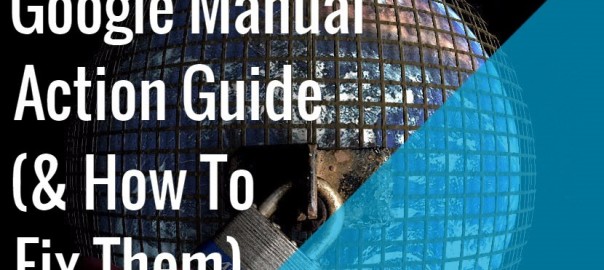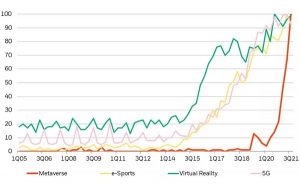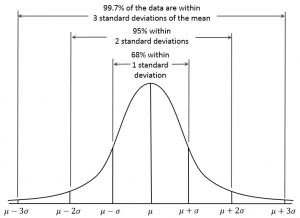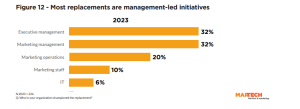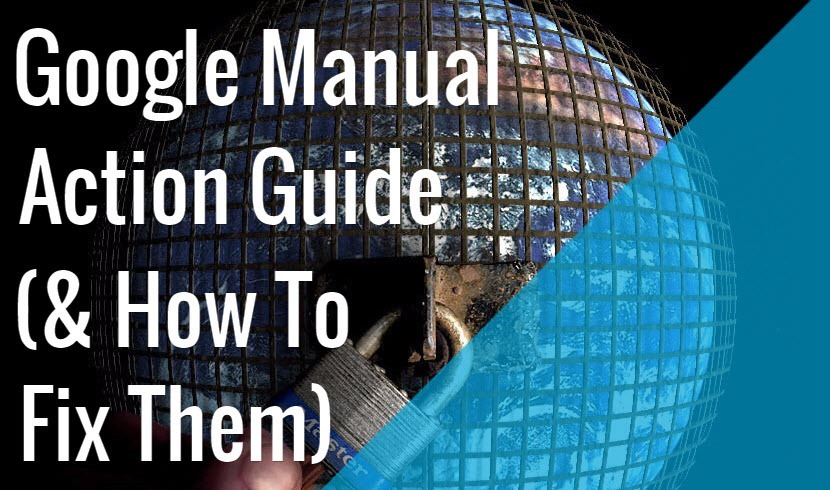
Google has little tolerance for websites that spam the Internet. Once you cross the line, you’re treated like a criminal who committed a spammy crime.
As punishment you’ll be sent to cyber jail through a manual action; a hefty Google penalty.
Just like there are different crimes in real life, there are also many types of spam in the World Wide Web.
Google takes action against these 11 SEO “crimes”:
- Unnatural links to your site: impacts links
- Unnatural links to your site
- Unnatural links from your site
- Hacked site
- Thin content with little or no added value
- Pure spam
- User-generated spam
- Cloaking and/or sneaky redirects
- Hidden text and/or keyword stuffing
- Spammy freehosts
- Spammy structured markup
Each Google penalty has a cause and a different approach to fixing it. Let’s discuss each manual action to explain the best approaches for fixing them one by one.
1. Unnatural Links To Your Site – Impacts Links
This manual action is very common, especially after any Penguin updates or refreshes. Most website owners deal with this sort of Google penalty and pay lots of money to revoke it.
You can be hit with this manual action for any of the following reasons:
- Unnatural link profile
- Purchasing paid links
- Exposed to unnatural link schemes
- Numerous irrelevant links
- Using old link building tactics:
- Article submission directories
- Free blog posting
- Blog commenting in unnatural way
- Profile linking in order to increase number of links
- Bookmarking
- Cheap directories
- Forum posting for backlinks
- Article submission directories
- Practicing black hat tactics
- Using exact match anchor texts to manipulate keyword rankings
- Creating blog-rolls to increase the number of links
At some point of time, these SEO practices were popularly used to rank higher. However, Google became smarter and started filtering results for a better user experience. All of these old practices are now obsolete. If you still follow these, you’ll definitely see your ranking fall with any Penguin update or refresh. Revoking a Google penalty is tedious work as you’ll need to completely evaluate the links of your website. Then, you must manually remove all bad links and request a reconsideration to Google.
2. Unnatural Links To Your Site
The only difference between this and the aforementioned Google penalty is the type of match i.e. whether the manual action is a partial or a site-wide match. A site-wide match affects the ranking of your whole website, which is pretty bad. On the other hand, a partial match affects the ranking of specific pages only.
Revoking this Google penalty has a similar process as the above method.
3. Unnatural Links From Your Site
You’ll find this manual action given to link farm sites, articles, blogs, directories, and forum sites that give out any unnatural links. This action clearly violates the Google linking guidelines. The best ways to revoke Unnatural links from your site are:
- Find the pages where you have added paid links or have excessive link exchange. Take steps to resolve
- Links may be irrelevant to your content
- Hidden or Low content links present on page
- Excessive advertisement links
- Links with optimized anchor texts
- Widely distributed link in footer
- Links in signature of forum
- Automated program to create links on site
- Links may be irrelevant to your content
- Remove all low quality links or use the rel=”nofollow” attribute in your anchor texts to avoid passing link juice.
- Request a reconsideration from the Google webmaster after you’ve fixed the problem. Be sure to follow the guidelines from now onwards.
4. Hacked Site
You may be hit with this Google penalty when your website is compromised or hacked by a third party. This might occur if you’re using:
- Non-verified or local plugins
- Cross site scripting
- Injection flaws
- Malicious file execution
- Insecure direct object reference
- Low strength passwords
- Incorrect methods to restrict URL access
Google always tries to warn website owners before flagging their sites as hacked. Check your “security issues” tab under the “Crawl” section in the Google webmaster tool. If you see any listed security problems, then follow the recommended actions by Google. If you see the below message, then you can chillax.

Unfortunately, if you’ve found that your site was hacked, then you must follow these steps:
- Contact your host provider.
- Quarantine your site by taking your site offline, changing all passwords, and check new user accounts.
- Touch base with the Google Search Console to see the security issues found.
- Assess the damage. If your site was hacked with spam, the display warning will be “This site may be hacked.” If you’ve been hacked with malware, the display warning will state “The site may harm your computer.”
- Identify the site’s vulnerabilities and list them out.
- Clean up the website to prevent future security problems.
- Request a review and send a reconsideration request to Google.
5. Thin Content With Little Or No Added Value
This is a very common flag. It’s usually pointed out after a Panda update. After the recently launched quality update on May 3, 2015, many webmasters reported the thin content flag in their webmaster account.

It clearly shows that you’ve been adding content to your website that’s not useful to readers. You may also be using scrap, or spun content, doorway pages, affiliate programs, and auto-generated content. All these are frowned upon.
To revoke this Google penalty, just follow these easy steps:
- Remove information found on your website that duplicates content found anywhere else on the Internet.
- Eliminate affiliate links on pages with little to no valued content, or add some value to the page’s content.
- Get rid of doorway pages or auto-generated content pages.
- Improve the website content to provide significant value for users.
Content quality should always be maintained as a priority. Amit Singhal wrote an excellent article showing how to write valuable posts, which surely will help you add value. Ranking well and avoiding another Google penalty will depend on your ability to craft great content.
6. Pure Spam
Pure spam is the flag given to websites using aggressive spam techniques such as cloaking, automatically generated gibberish, and scraping content from other websites.
Pure spam signals that you’ve committed severe violations of Google’s quality guidelines. Google also gives live spam screenshots from sites which were manually identified and were recently (sometimes minutes ago) removed from Google’s index.

Removing this Google penalty will require that you take all current content down and replace it with valuable content.
7. User-generated Spam
User-generated content is a type of spam that you can commonly see in forum threads, blog comments, and profile links. Such spam limits the Internet, so webmasters must take care of it to avoid a Google penalty. Otherwise, you’ll be flagged with “user-generated spam.” You can revoke user-generated spam by:
- Check out the site pages where the following type of content is present:
- Fake User Profiles
- Commercial name used instead of real name
- Irrelevant topic is present
- Irrelevant link is present
- Advertising tone in messages
- Targeted page for link purpose is used
- Links in signature
- Using Keywords or Brand Name in the comment section
- Profile created for the purpose of link and no value or info is added
- Use “site:” operator to identify irrelevant content on site.
- Fake User Profiles
- List these out and remove the content from the site.
- Prevent your site from future spam through regular moderation or anti-spam tools.
- Once you’re finished, send a reconsideration request to Google from your webmaster account.
8. Cloaking And/or Sneaky Redirects
Cloaking is another bad SEO practice that shows different content to users than the search engines. Showing users a completely different page than the bots is a major violation of quality guidelines and will result in a Google penalty. Another malicious tactic is sneaky redirects, which takes users from one domain to another spam domain. Stopping such bad practices is essential to lift the Google penalty, or else you’ll see your organic online traffic suffer.
9. Hidden Text and/or Keyword Stuffing
Website owners try to hide text by showing a blank space or white wording on white backgrounds to users. Yet, the texts remain readable by Google Bots. This sort of unlawful SEO practice can be easily detected by search engines and cause a manual action. Keyword stuffing is another very popular mistake that is immediately catchable by Google.
Avoiding these techniques is all Google wants, so removing them will eradicate the penalty. This will also make your site user and search engine friendly for driving more natural clicks.
10. Spammy Freehosts
This occurs when porn or spam websites are hosted on free hosting service providers. Google meets this significant infraction by taking a manual action on the freehost. Many hosting providers give free service to create their websites, but spammers often use them badly. That ultimately reflects poorly on the service owner with a Google penalty.
It’s recommended that you prevent such spam on your free hosting site by moderating every account. Clearly mention all terms and conditions on top so that spam can be minimized. The flag can be revoked by removing all the spammy accounts hosted on the server and preventing it from future spam.
11. Spammy Structured Markup
This type of spam is rare because only few websites use structured data, but it’s fairly easy to fall victim to this Google penalty. When you try to manipulate the structured data for gaining more clicks on SERP, Google will flag your site with “spammy structured data”.
Check the following points before implementing your site’s structured data. If you’ve been hit with a manual action, take steps to remove these violations:
- Faking review markup without any real reviews, votes, or testimonials
- Showing offers or using event markup simply for advertising
- Applying product markup for adult content
- Placing person markup on a brand or keywords rather than a real person
- Using recipe markup for keywords that gain clicks or user attention
- Placing review markup on adult content
- Not making the markup content readily available to users
- Putting promotional content, such as price or a call to purchase, in event markup instead of relevant information
Once you follow the detailed guidelines on structured data provided by Google, then you can submit a reconsideration request to revoke the penalty.
Conclusion:
If you encounter any of the 11 manual actions, you now know how to fix them and get your website back on SERP results. When your penalty is revoked, follow on-page and off-page SEO practices to ensure you won’t become caught again with a Google penalty. Search engines simply want you to show that you love your website and won’t make the same mistakes again. Google doesn’t want to destroy your business. Simply be honest and work for the benefit of your website’s users. Leave the rest to Google and you’ll secure your position at the top.
Now Read
- 9 Tips For Evaluating The Quality Of Your Site’s Content vs. A Competitor
- 4 Steps For Protecting Your Website From Google Penalties
* Leader image adapted from AZRainman
Google’s Manual Actions Guide (& How To Fix Them)
The post Google’s Manual Actions Guide (& How To Fix Them) appeared first on Search Engine People Blog.
(249)
